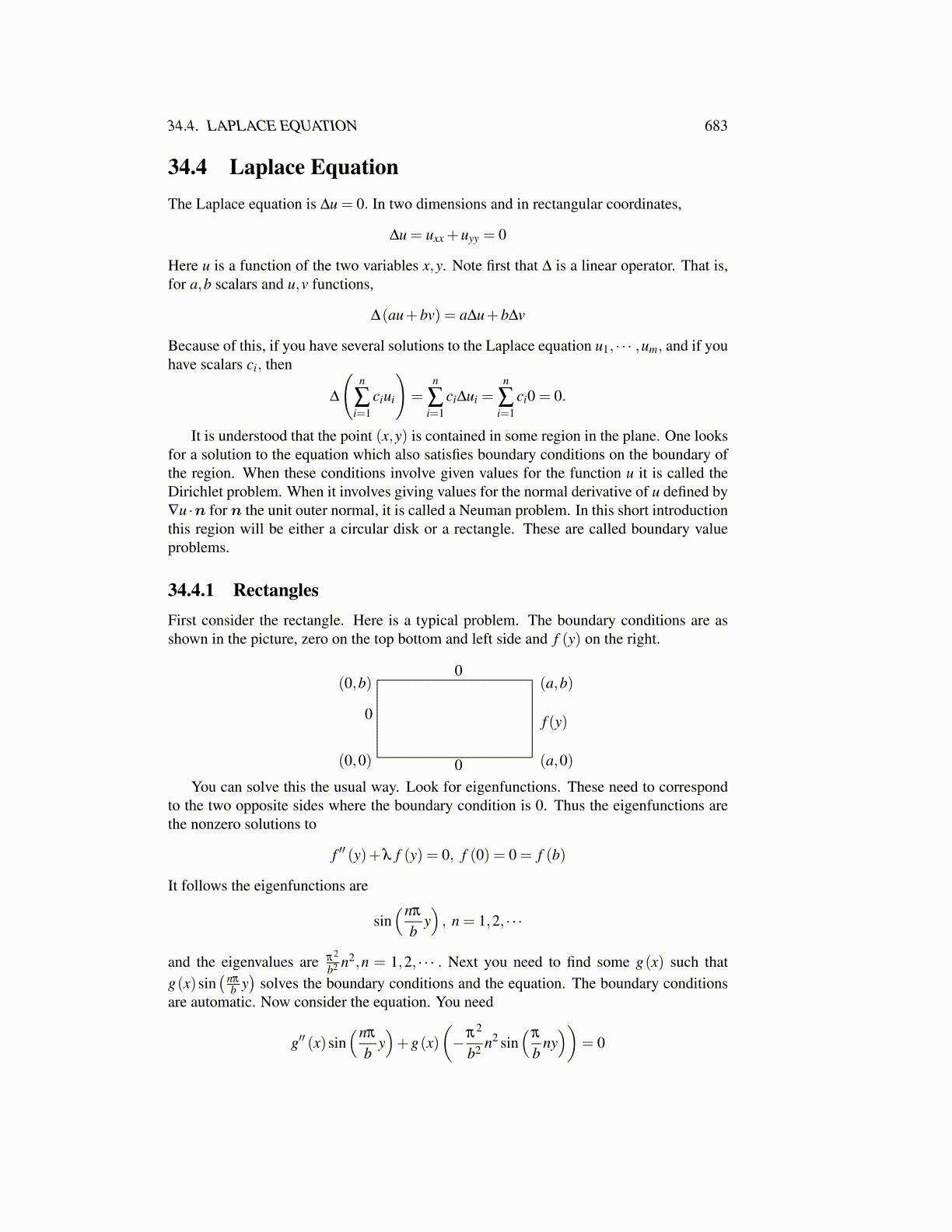
34.4. LAPLACE EQUATION 683
34.4 Laplace EquationThe Laplace equation is ∆u = 0. In two dimensions and in rectangular coordinates,
∆u = uxx +uyy = 0
Here u is a function of the two variables x,y. Note first that ∆ is a linear operator. That is,for a,b scalars and u,v functions,
∆(au+bv) = a∆u+b∆v
Because of this, if you have several solutions to the Laplace equation u1, · · · ,um, and if youhave scalars ci, then
∆
(n
∑i=1
ciui
)=
n
∑i=1
ci∆ui =n
∑i=1
ci0 = 0.
It is understood that the point (x,y) is contained in some region in the plane. One looksfor a solution to the equation which also satisfies boundary conditions on the boundary ofthe region. When these conditions involve given values for the function u it is called theDirichlet problem. When it involves giving values for the normal derivative of u defined by∇u ·n for n the unit outer normal, it is called a Neuman problem. In this short introductionthis region will be either a circular disk or a rectangle. These are called boundary valueproblems.
34.4.1 RectanglesFirst consider the rectangle. Here is a typical problem. The boundary conditions are asshown in the picture, zero on the top bottom and left side and f (y) on the right.
(a,b)
(a,0)(0,0)
(0,b)
f (y)
0
0
0You can solve this the usual way. Look for eigenfunctions. These need to correspond
to the two opposite sides where the boundary condition is 0. Thus the eigenfunctions arethe nonzero solutions to
f ′′ (y)+λ f (y) = 0, f (0) = 0 = f (b)
It follows the eigenfunctions are
sin(nπ
by), n = 1,2, · · ·
and the eigenvalues are π2
b2 n2,n = 1,2, · · · . Next you need to find some g(x) such thatg(x)sin
( nπ
b y)
solves the boundary conditions and the equation. The boundary conditionsare automatic. Now consider the equation. You need
g′′ (x)sin(nπ
by)+g(x)
(−π2
b2 n2 sin(
π
bny))
= 0